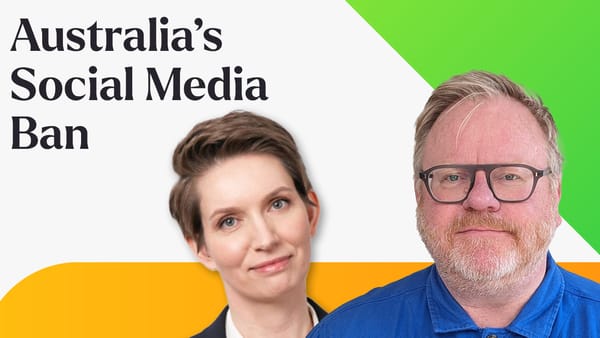Content creators and influencers are an essential part of the digital economy. Both can help brands gain credibility and sell products.
The terms are often used interchangeably, but what do content creators and influencers do? How does each differ from the perspective of a brand or a consumer? We’ll answer these questions below.
What does a content creator do?
As the title suggests, a content creator develops and creates content. This is usually original material based on their expertise and niche. Their primary focus is to create content that suits the content strategy, target audience, niche, and distribution platform of the business, brand, or campaign they represent.
The content can vary in format, ranging from videos, audio recordings, graphics, photographs, and articles to blog posts. This content is distributed on various platforms, including websites, social media, streaming platforms, print media, etc.
For example, video content creators can share their work on TikTok, YouTube, or Instagram Reels. Written content can be distributed to news aggregators like MSN and AP Wire or uploaded on niche blog websites. Audio content can be used for podcasts and distributed to aggregators like Spotify and Apple Podcasts.
Different types of content creators
Content marketing expert Joel Capperella categorises creators into four buckets according to their expertise and the medium they use. Brands need to recognise the type of creators that suit their marketing goals.
- The Speaker – These content creators are comfortable speaking in front of a large audience. The speaker is usually an articulate and concise verbal communicator. They convey information through public speaking efficiently. For example, podcasters would usually belong to this category.
- The Writer – These creators are wordsmiths who know how to get their readers’ attention with written communication. Writers make great bloggers, course creators, and authors.
- The Visualiser – Visualisers are excellent at efficiently communicating their point using visual materials like videos, photographs, and graphics. Successful TikTok and Instagram creators fall into this category.
- The Networker – Networkers excel at content that brings people together to share ideas and opinions. Like a radio host, any creator dealing with a live audience must excel at this.
What does an influencer do?
Often with a large number of followers, influencers are social media personalities that are quickly becoming an essential part of a successful digital marketing strategy for brands.
Similar to content creators, influencers post content on their social media and other content distribution channels. The type of content that influencers post, though, is mainly personal. Most influencers share intimate details about their lifestyle, purchases, and opinions. This way, they can build a loyal follower base who feel connected to the influencer.
Influencers typically earn money by sharing sponsored content to ‘influence’ and persuade their followers to purchase products, services, or programs. The content would usually be made to suit the format and channel where they have a following.
Different types of influencers
Influencers are often categorised according to the size of their audience.
- Nano-influencers are social media personalities with followers ranging between 1,000 and 10,000.
- Micro-influencers have between 10,000 and 100,000 followers.
- Macro influencers range from 100,000 to 1M followers.
- Mega influencers are social media personalities with 1M+ followers.
What separates a content creator from an influencer?
A content creator may publish hugely popular content, but their audience may not necessarily know them personally. On the other hand, an influencer thrives on a personal relationship with their followers. Apart from this, three key factors separate a content creator from an influencer.
1. Intention and monetisation strategy
Content creators create their content strategy to:
- Fit the marketing needs of brands and businesses.
- Suit the search intent of internet users.
- Suit their own business goals.
They leverage their audience to make money from blogs, videos, posts, and audio content in a few ways:
- Placing ads in the content.
- Generating sales for affiliate brands by recommending them in their content.
- Selling paid content and subscriptions.
Influencers, on the other hand, execute a different strategy. Their foremost intention is to:
- Grow a loyal following. Social media is usually their channel of choice.
- Form a personal relationship with followers and encourage engagement on posts, which is a key metric of successful influencers.
Influencers earn income in a few ways:
- Working with brands and using their influence to promote products, services, and programmes.
- Selling their products to their followers.
It’s crucial to note that not all sponsored posts offer a monetary benefit. Influencers often receive free products or services in exchange for promoting certain brands.
2. Skills
Content creators are experts in some or all of the following skills:
- Storytelling
- Verbal communication
- Writing
- Video and photo editing
- Content management and distribution
- SEO to rank on search engines and social media
Influencers need to master a slightly different set of skills:
- Audience management and engagement
- Social media management
- Niche expertise
- Basic tech knowledge
- Basic photo and video editing
- Basic advertising knowledge
3. Tools
Content creators and influencers use various online business tools for their craft.
Content creators use various writing and editing software, SEO optimisation applications, and content management systems.
These are some of the popular tools used by content creators:
- WordPress
- AI content generators
- Grammarly
- Google Trends / Ahrefs
- SEMRush
- Hemingway App
- Unsplash or Pexels
- Audacity
Influencers typically use various social media management and editing tools, including:
- Social media platforms
- Canva
- Remove.bg
- Sprout Social
- Influence.co
The tools identified above are just a starting point. Content creators and influencers may use some of these tools or a completely different set based on their needs and goals.
Influencers vs. Content Creators
Influencers and content creators are vital to today’s digital economy. While both create some form of content, their intention, strategy, and tools can differ. Influencers depend on a lifestyle and personality-based following, while creators let their content take centre stage.
Both can be hugely valuable to brands and businesses, but knowing the nuances shared in this post is essential to formulate the right marketing strategy for each.
Author: Ash & Pri are the founders of AshandPri.com, where they empower readers to make smart money decisions across all aspects of life. After achieving their FIRE goals in their 30s, they launched their blogging business in late 2021 and scaled it up quickly to generate a consistent income within a few months.








